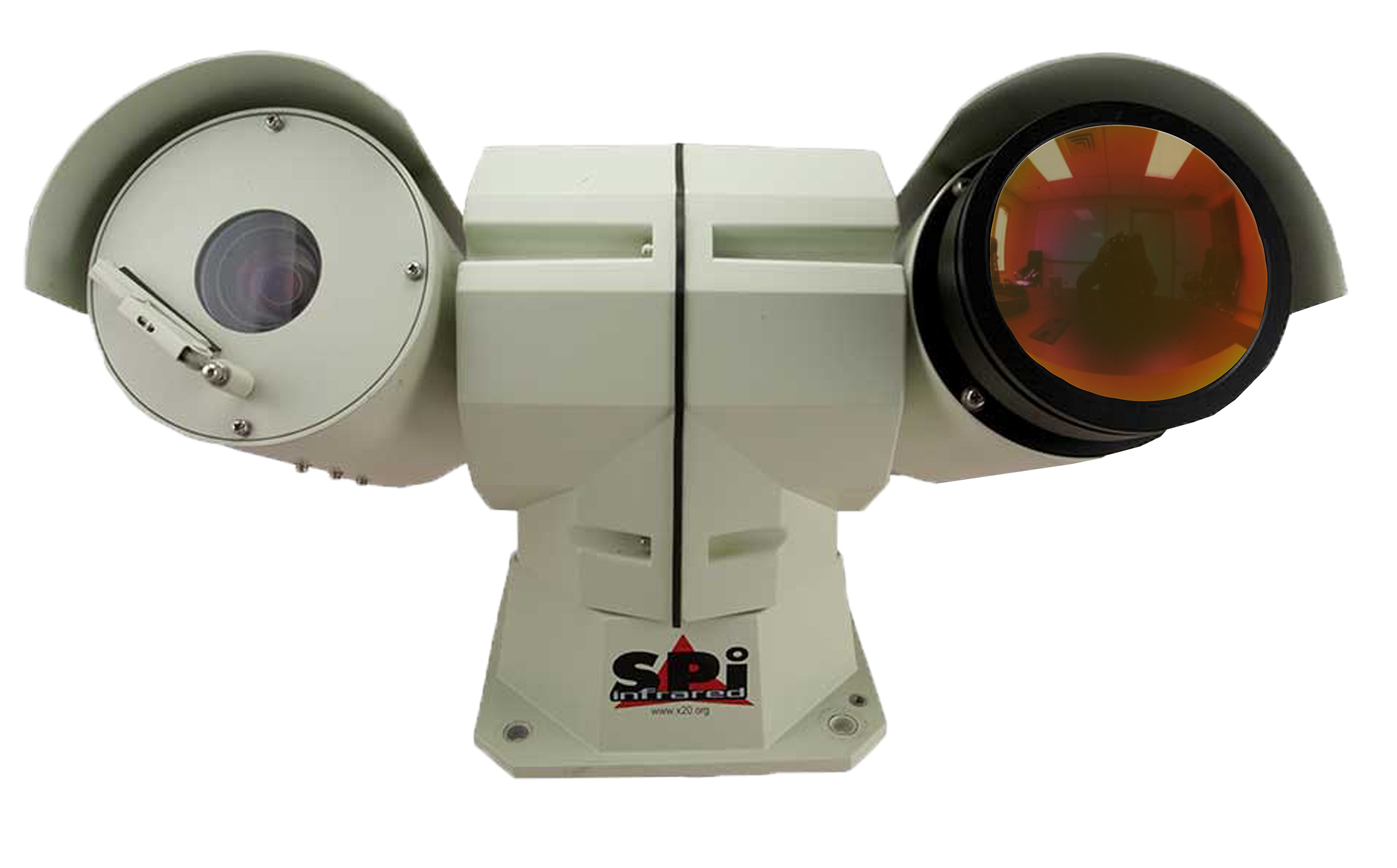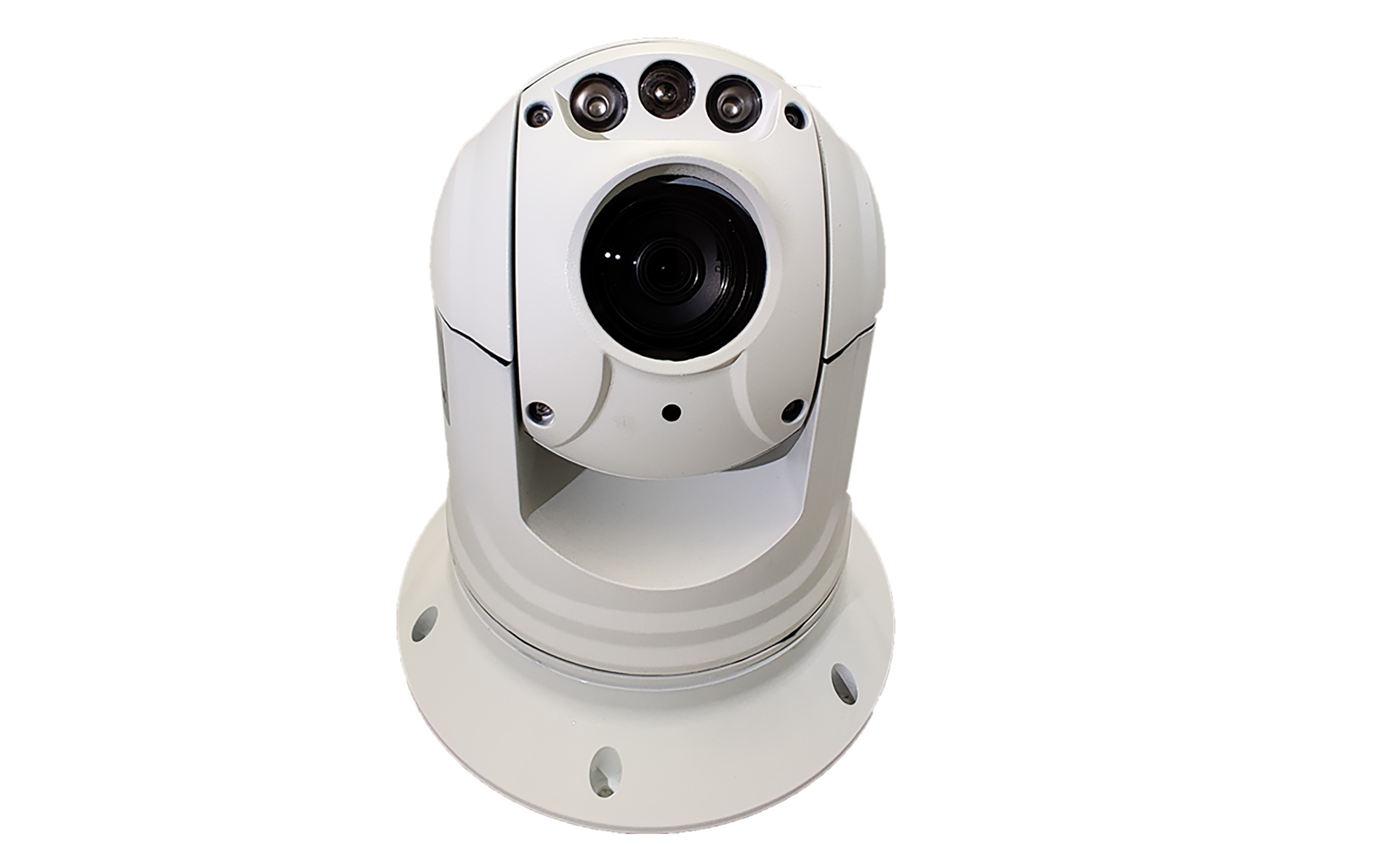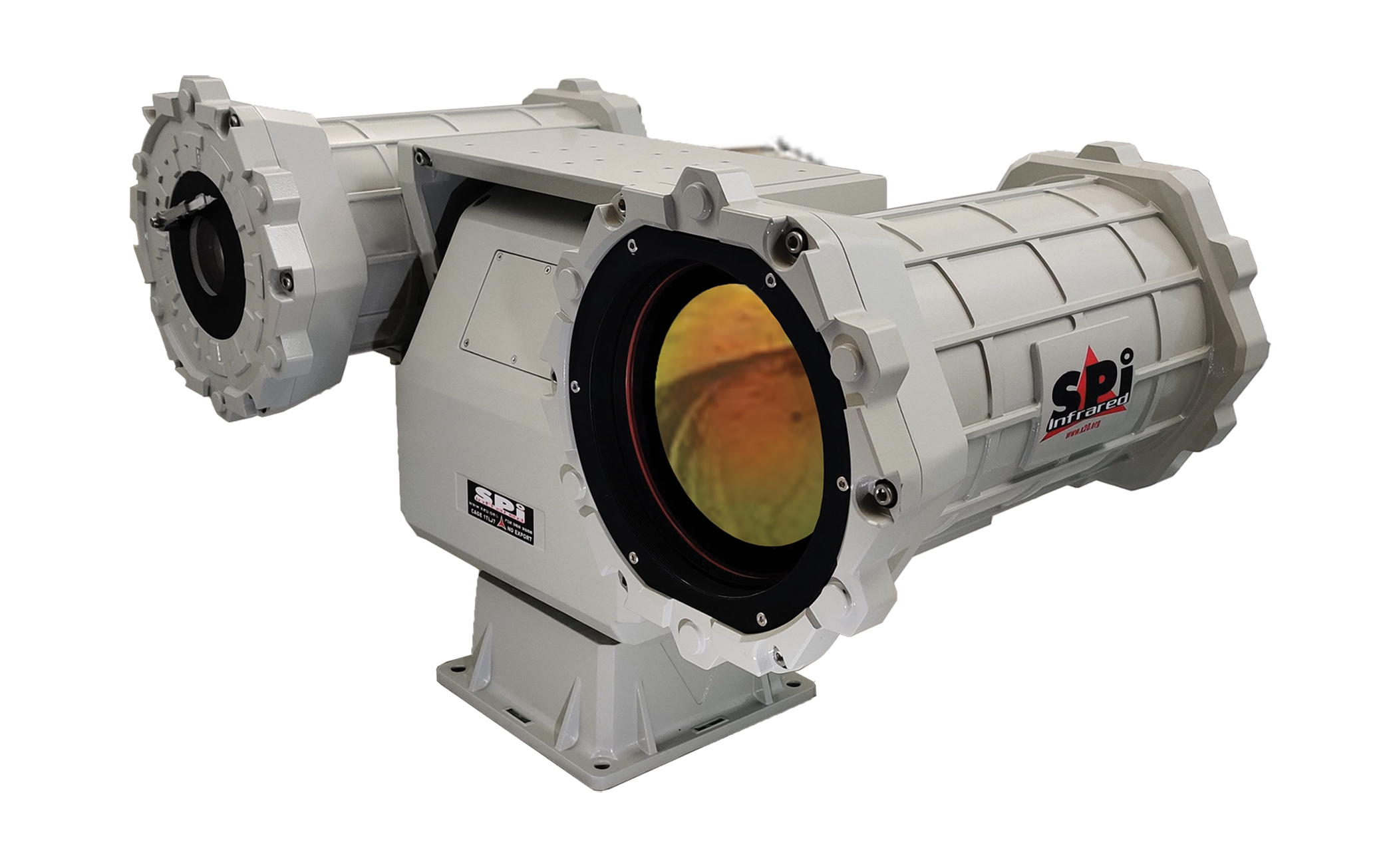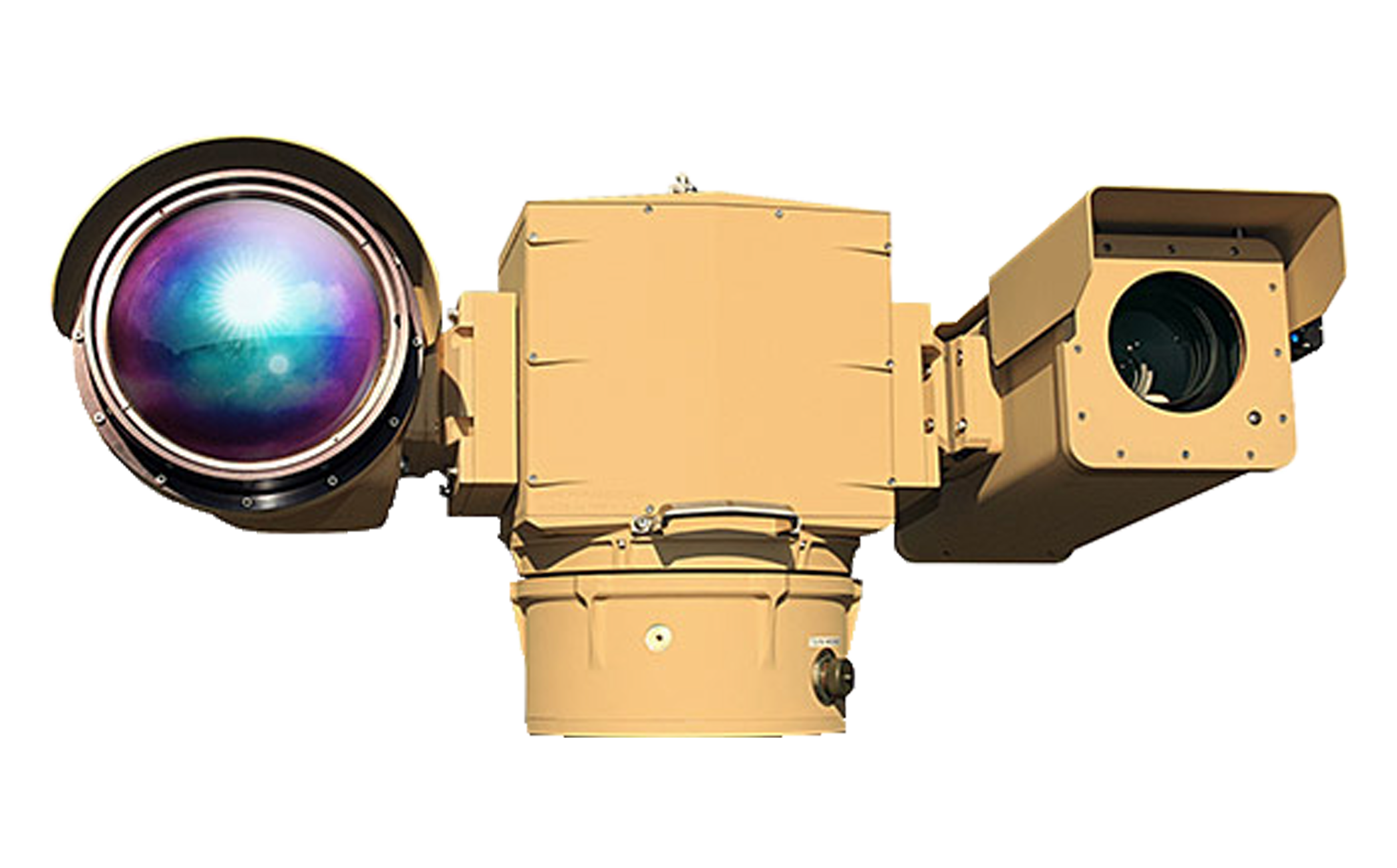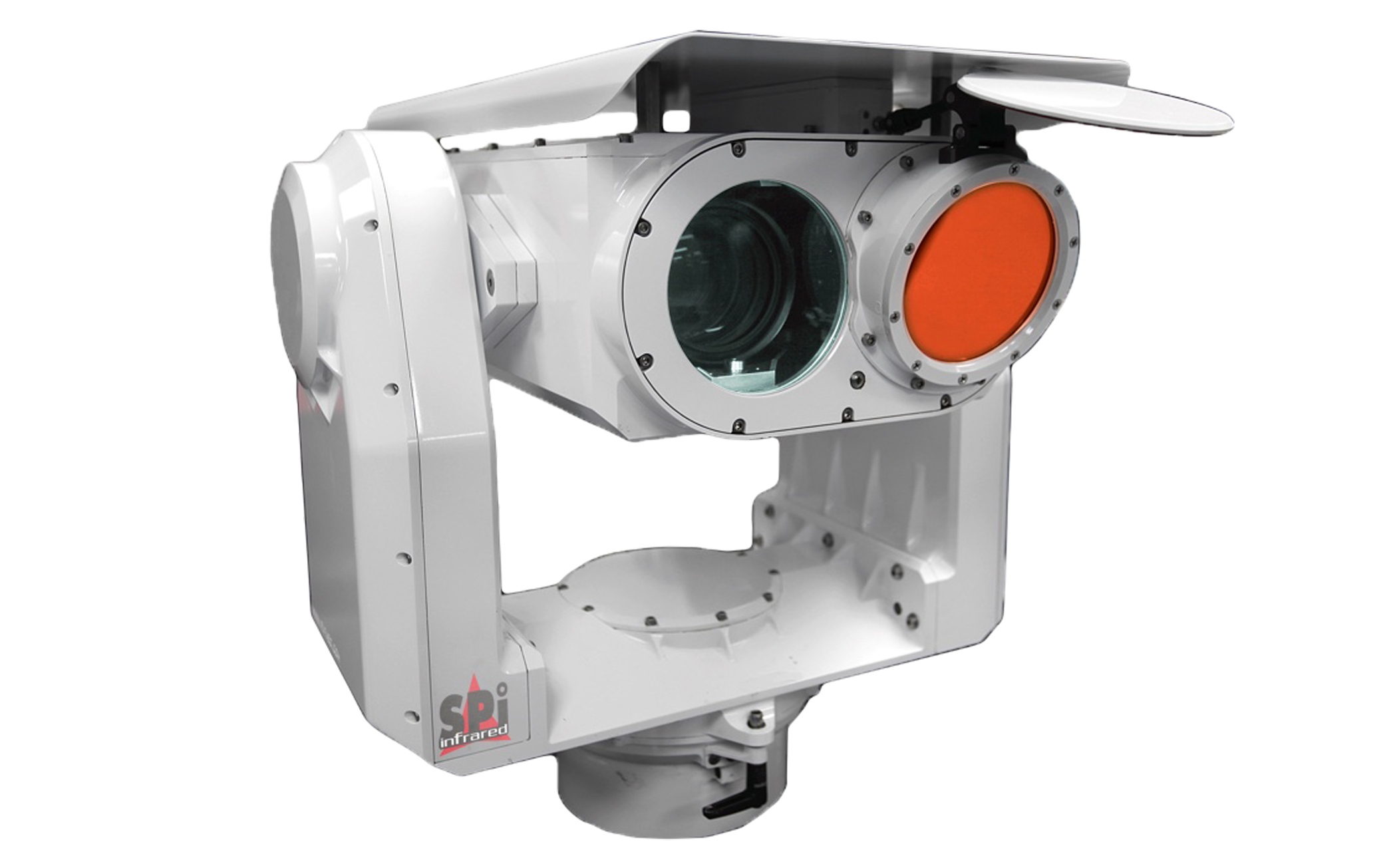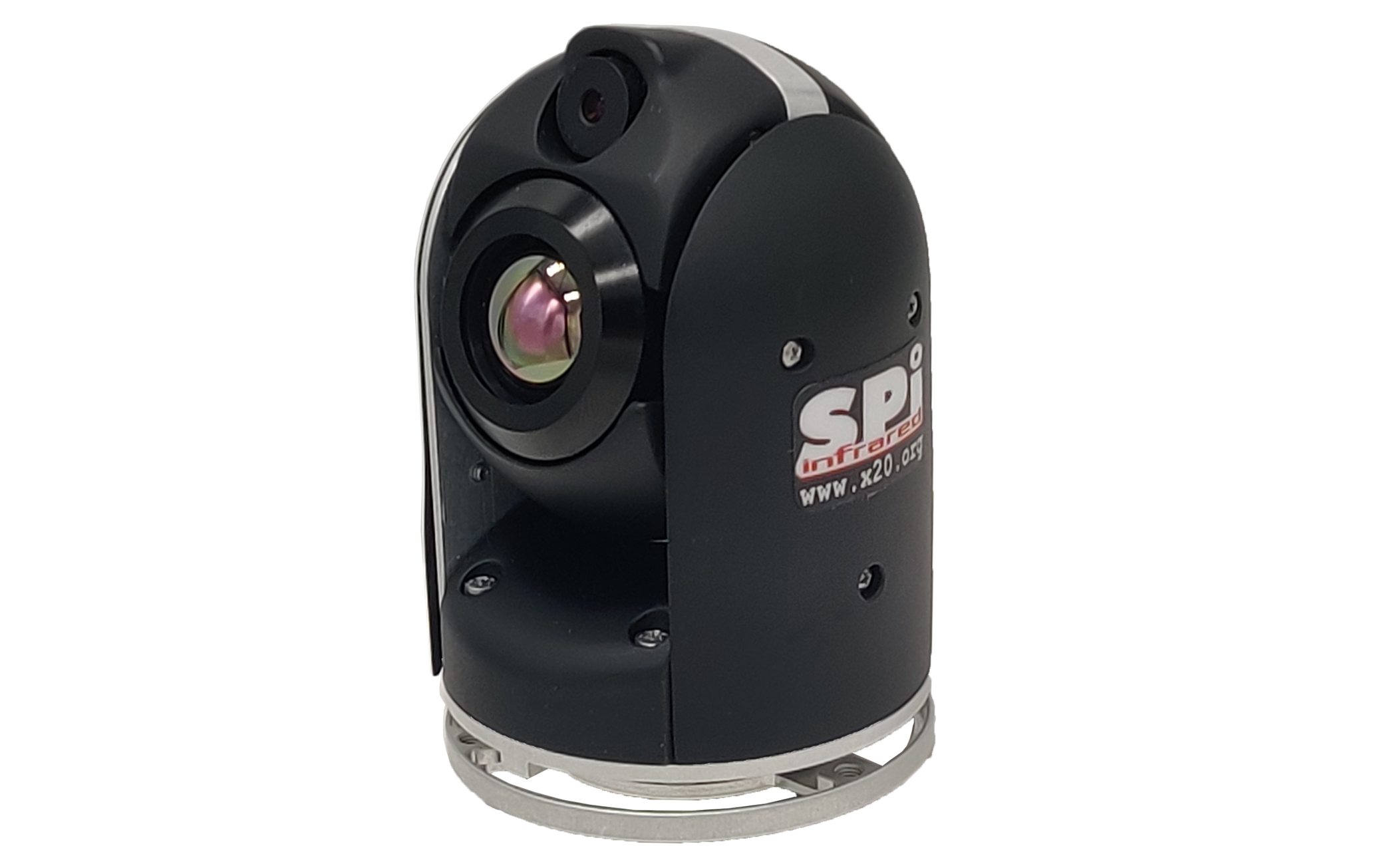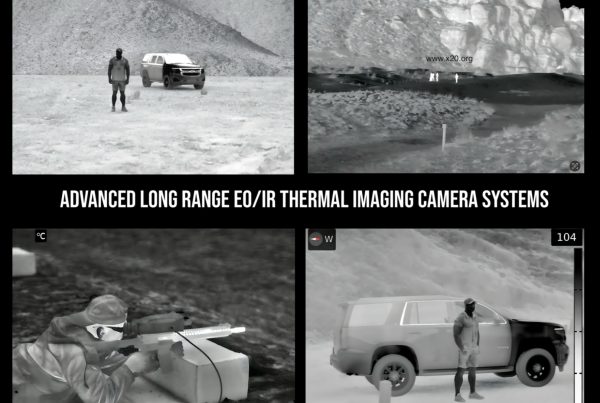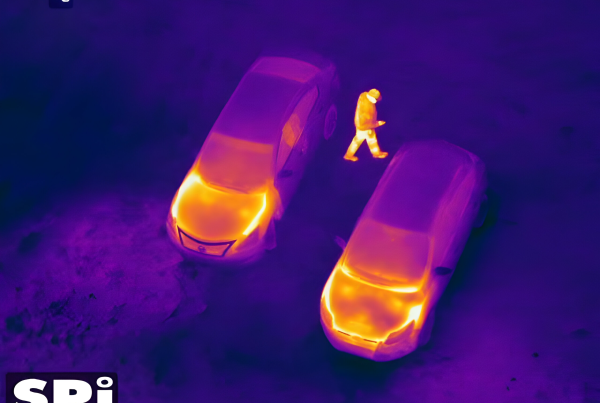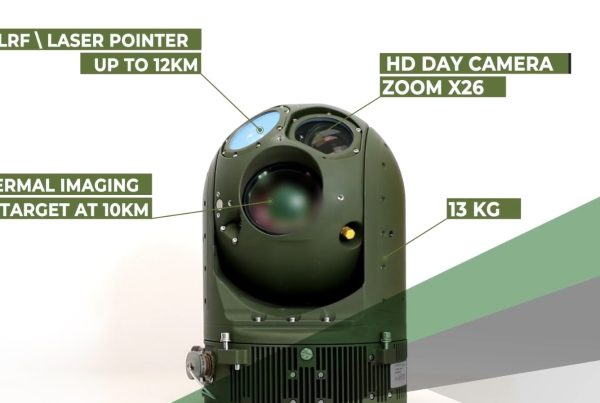PTZ thermal cameras
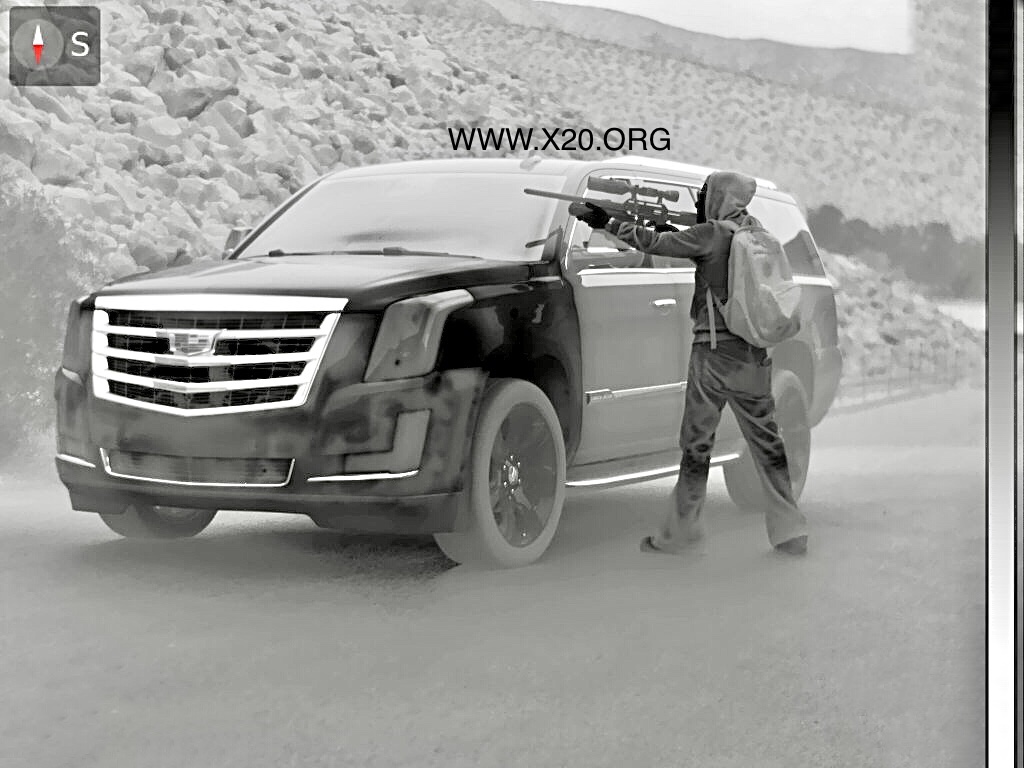
X26 offers cost-effective, long-range, electro-optical, visual and thermal imaging Flir pan tilt PTZ thermal cameras with short, medium, long and very long range Zoom sensors and optics
Our all weather rugged titanium gimbals that can be completely custom-built to your exact specifications and requirements.
Our PTZ thermal imaging flir cameras are suitable for Land, mobile, marine and airborne applications.
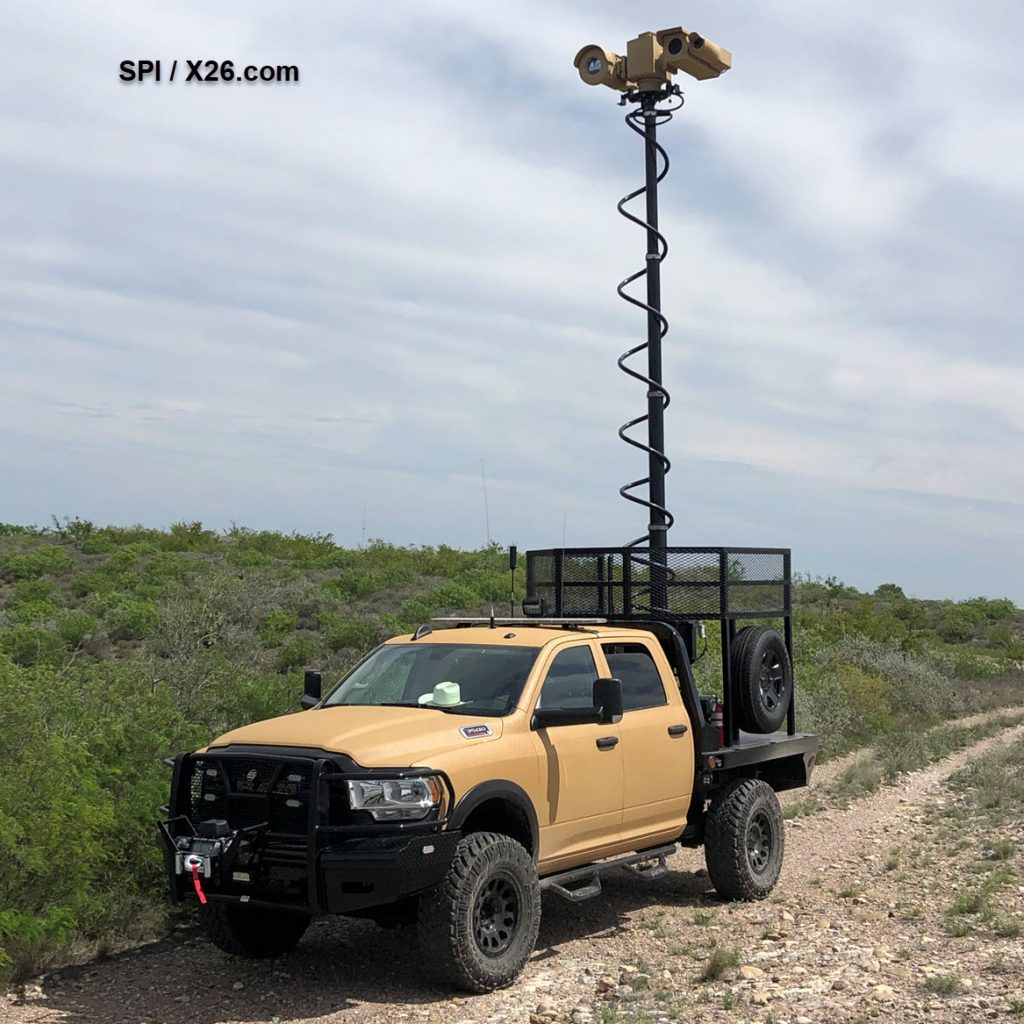
PTZ THERMAL IMAGING FLIR CAMERAS PRODUCT SELECTION:
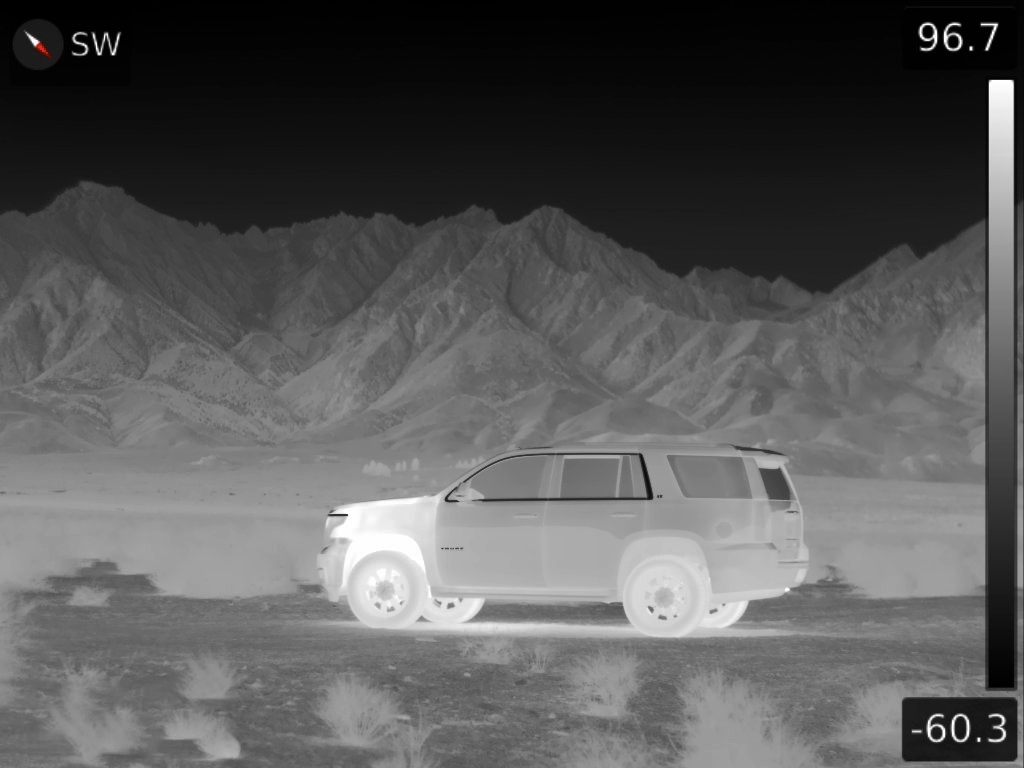
Our PTZ Flir thermal Imaging cameras offer:
- Ultra Long-Range Fast, Coated, hardened Zoom telephoto thermal imaging Germanium Lenses
- Long range Cooled MWIR and UnCooled LWIR Thermal imaging FLIR Cameras
- SD, HD High Definition microbolometer, HOT MCT, InSb ultra sensitive thermal flir IR Cameras
- Robust Multi axis 360 degree Gyro Stabilized Pan & Tilt gimbals
- Gyro stabilized micro mini named and unmanned drone thermal camera turret balls
- SD and HD long range low light visible CMOS color EO continuous zoom cameras
- Long Range LRF Laser Range Finders exceeding 20 kilometer
- Long Range thermal cameras
- Long Range IR Infrared Laser Pointers/illuminators/designators Exceeding 10 mile distances
- Rugged All-Weather IP 67, IP 68, MilSpec, MilStd Designs
- Long range FLIR cameras
- A Host of custom optional add on sensors such as SWIR, LRAD, Laser Dazzlers, CCTV camera countermeasure,
Color night vision, and specialty exotic sensors to compliment our Day/Night PTZ platforms - Anti Drone, UAV, UAS countermeasure and defeat gimbal systems
- 3D Radar 360° Security and surveillance tracking with Slew to cue camera mating
- Panoramic 360° thermal scanning gimbals for constant area security and surveillance
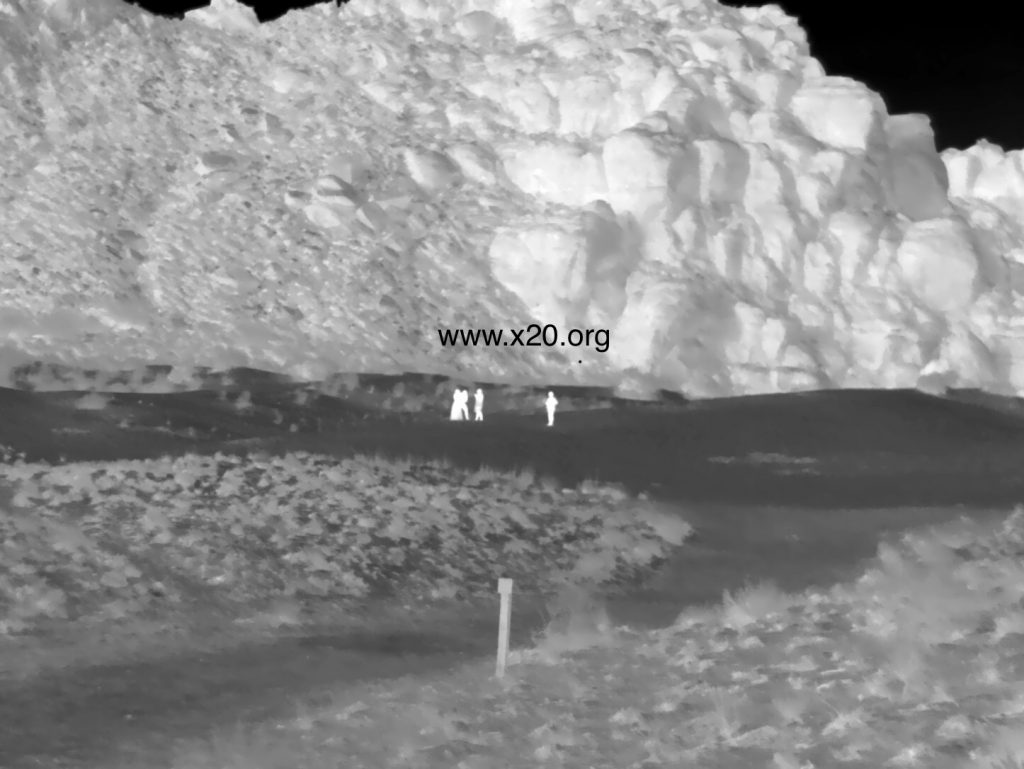
X26 provides cost effective Long Range day and night vision multi sensor fixed and PTZ Pan Tilt Zoom Flir thermal imaging camera systems built to withstand the most demanding applications. Our High performance, all weather, reliable systems are available in COTS or Custom configurations and are built with the highest quality components.
Long range thermal imaging cameras for marine applications, There are some very important marine application of thermal imaging, not least as a significant boost to collision detection systems when sailing at night, in fog, or during severe weather. While underwater thermal imaging per se is rather limited in its effectiveness (even with the most advanced technologies) it’s not unusual today to find heat detection cameras manufactured to marine grade specifications and mounted in multiple positions aboard seagoing vessels of all sizes.
PTZ Flir IR thermal camera applications
- Port Security/surveillance long range thermal camera
- Coastal Security/surveillance long range thermal camera
- Border Security/surveillance PTZ long range thermal camera
- Perimeter Security/surveillance infrared imaging Pan Tilt PTZ FLIR
- Shoreline Security/surveillance infrared imaging Pan Tilt PTZ Thermal cameras
- Long Range Security/surveillancePTZ long range thermal camera
- Airport Security/surveillance PTZ long range thermal camera
- Runway Security/surveillance Thermal imaging Pan Tilt PTZ FLIR
- Maritime Security/surveillance IR imaging PTZ Thermal imaging
- Marine Security/surveillance Thermal imaging Pan Tilt PTZ FLIR
- Critical Infrastructure Security/surveillance long range thermal camera
- Vehicle mounted Security/surveillance Thermal imaging Pan Tilt PTZ FLIR
- Multi Sensor Security/surveillance Thermal imaging Pan Tilt PTZ FLIR
- Dual Sensor Security/surveillance IR imaging Pan Tilt PTZ thermal cameras
- Panoramic scanning Security/surveillance Thermal imaging Pan Tilt PTZ FLIR cameras
- Drone, UAV, UAS, SUAS Security/surveillance Thermal imaging Pan Tilt PTZ FLIR
- Range Security/surveillance Thermal imaging Pan Tilt PTZ FLIR
- Covert / Special operations tactical Security/surveillance Thermal imaging Pan Tilt PTZ FLIR
- Unmanned Ground Vehicle UGV Security/surveillance Thermal imaging Pan Tilt PTZ FLIR
- EO-IR Security/surveillance Thermal imaging Pan Tilt PTZ FLIR
- ISR Security/surveillance Thermal imaging Pan Tilt PTZ FLIR
Long range Thermal imaging is often used in remotely piloted drones (UAVs), greatly enhancing general recon capabilities in dangerous or difficult-to-observe conditions. In hobbyist drones, thermal imaging can be a great asset to photographers for a wide range of purposes, while long range UAV UAS Drone thermal imaging is also highly beneficial to emergency response units, search and rescue teams, and in tactical military applications.
Long range thermal security cameras. Almost all business premises today deploy security camera technologies in one form or another. In recent years, it has become increasingly standard practice to rely on thermal imaging surveillance equipment for the best possible results in terms of protection, identification and return on investment.
Long range Thermal security cameras reliably perform very well in low light and poor visibility areas, as well as providing the ability to strip away much of the visual camouflage – such as dense foliage – that’s often found close to offices and warehousing, especially useful at extended ranges for detecting human activity. In addition, thermal imaging CCTV cameras are usually bundled with smart sensors and advanced analytics technology, helping to reduce the number of false alarms.
Finally, heat detection-based systems are often cheaper to install and run long-term than standard CCTV setups, which need to be placed along every available line of sight in order to be fully effective – and which frequently require costly additional lighting to be rigged nearby in order to provide even basic functionality.
Military, law enforcement, search and rescue security and surveillance professionals utilizing PTZ thermal flir cameras
Perhaps The most common usage of handheld Flir thermal imager’s is their use for night vision applications, these devices offer very extensive capability for seeing in pitch darkness and an adverse conditions, military and law-enforcement professionals throughout the world use handheld thermal imaging cameras in many formats, they come in binoculars monoculars, thermal rifle scopes, pan tilt zoom (PTZ), The systems are used for short medium and long range visual enhancement applications, unlike the traditional green night vision which also has extensive benefits thermal imaging night vision systems work based off of infrared heat radiation that’s giving them the capability to see in total pitch darkness.
long range SWIR-Short-wave infrared (SWIR) light is typically defined as light in the 1000 – 3000 nm wavelength range and primarily uses Indium gallium arsenide (InGaAs) infrared detectors to capture images. SWIR is being implemented more in modern long range imaging systems for its unique surveillance capabilities. SWIR can see through thick water vapors, including haze and fog. In port and harbor security scenarios where fog and haze are a regular occurrence, SWIR identifies vessels, people, and floating objects in any weather, even obscured by fog. Long range SWIR also sees through opaque packaging such as plastic bottles to determine fill levels in pharmaceuticals, chemicals, and cosmetics for quality control.
Our long range flir PTZ thermal cameras are robust, All weather, heavy duty PTZ (Pan Tilt Zoom) positioners/Gimbals that rotate continuously 360 degrees and Pan/Tilt up and down allowing the user to guide and control the motors and position the long range flir cameras and associated sensors to the position of interest. The long range flir PTZ thermal Security cameras can be gyro-stabilized which reduces the shake and jitter from the imagery especially when zoomed in to maximum telephoto ranges. Our long range flir PTZ thermal Security cameras Have the ability of reaching out and detecting threats up to 50 kilometers. All of our flir PTZ thermal camera come with a complimentary long range zoom daytime EO CMOS low light camera Which make these systems a true complete day and night imaging system. Additional sensors can be added onto our long range flir PTZ thermal cameras such as SWIR (Short Wave Infrared) cameras, Laser rangefinders (LRF), tracking, radar with slew to cue capabilities, GPS, Compass, Laser dazzlers, microphones, spotlights, loudspeakers, laser infrared Illuminators, laser infrared pointers, and high speed cameras. We custom build our long range flir PTZ thermal camera and can incorporate most any add on option you can imagine into our gimbal platforms. Our thermal cameras offer the user crisp, clear image quality with outstanding detail, clarity and fidelity. Long range infrared cameras come in both Cooled MWIR and LWIR uncooled flavors in both HD (High Definition) and SD VGA (Standard definition) which is typically 640×480 or 640×512 Pixel resolution. Our long range thermal imaging flir camera systems are mounted in harsh environments and used for Border patrol and protection, coastline and shoreline installations, range, airports, forward Operation and observation bases (FOB), runways, critical infrastructures, high value asset protection and anywhere where long range 24/7 day and night vision imaging is critical to secure and protect a specific area. Our long range flir PTZ thermal cameras are easily mounted in multiple configurations like on roof mounted, car, Truck, mobile command vehicles, security vehicle and mobile applications. In marine vessels, our long range flir ptz thermal cameras Are mounted to boats, yachts and cruise ships. Other mounting provisions are portable trailers, telescoping masts, poles, tripods, pendant, buildings and fixed mounts. SPI uses the best, most reliable and longest lasting coolers in the midwave MWIR long range thermal camera systems which is a critical factor in the procurement of long range flir cameras. Having a reliable cooler ensures years of continuous maintenance free operation from the MWIR camera. We source the best Cooled Camera system made up of indium antimonide InSb, HOT MCT Mercury Cadmium Telluride and SLS types with micro pitches as small as 10 µm.
Some long range flir thermal imagers are also equipped with a video output option that enables the image to be displayed on a separate external display. Common video output options include National Television System Committee (NTSC), phase alternating line (PAL), and RS-170. Video may also be available in a digital format via a Universal Serial Bus (USB) connection. NTSC and RS-170 are standard video formats used widely in both North and South America, excluding Brazil. Most of Europe, Brazil, Australia, and Asia use the PAL standard.
Image Resolution, Refresh Rate, and Video Polarity
The image resolution, refresh rate, and video polarity of flir long range IR handheld thermal imagers affect the image quality.
• Image Resolution: The image resolution of a long range night vision flir handheld thermal imager is an indicator of its ability to resolve detail in an image. Although it is not the sole determining factor, a higher resolution greatly contributes to capturing a clear, high quality image, This is due to the fact that a higher resolution imager uses more pixels, allowing more detail of the scene to be captured and displayed. The image resolution of a flir long range handheld thermal imager is determined by the IR detector resolution and the display resolution. The resolution of each of these may be different, and it is important to note that the display cannot produce more pixels than what is provided by the IR detector. For example, if thermal imager has a display with a 640×480 resolution (307,200 pixels) and an IR detector with a 420×240 resolution (100,800 pixels), the resulting image will have 100,800 pixels (i.e., a resolution equivalent to the IR detector), not 307,200. SPI is now offering long range thermal imaging flir cameras with HD 1280 and 1920 high definition high sensitivity resolution with gyro stabilization, ptz, ip, and network capabilities for remote unmanned or manned use. Multi sensor, multi spectral long range pan tilt zoom or PTZ systems are available with multiple cooled / uncooled payloads like visible – NIR – SWIR – MWIR – LWIR – VLWIR.
It would be unusual to find a long range IR flir thermal imager with an IR detector resolution higher than the display resolution; therefore, the IR flir detector with long range zoom germanium lens resolution is typically a better reference of image quality than display resolution. Video Polarity: Video polarity refers to the color gradients or shades displayed to indicate IR differences. Video polarity aids in understanding the various heat levels emitted from people and objects in the surrounding area, the three most common video polarity display modes are white hot, black hot, and color, and most thermal imagers feature user-selectable display modes. In white-hot display mode, hotter temperatures appear lighter while cooler temperatures appear darker. The opposite is true in black-hot display mode. Typically, a white-hot display mode provides more details of a specific person or object within a scene and a black- hot display mode provides better details of the overall scene. Color display modes are available in different gradients (e.g., sepia) that vary across manufacturers. Color display modes may allow for a more comprehensive understanding of IR differences. Display mode preferences generally vary by user and application. When interviewed, emergency responders recommended swapping between display modes regularly to take advantage of the benefits of each. Detection Range
Although manufacturers specify the maximum detection range on their models, it is unclear which relevant testing standards were used to determine these numbers. Moreover, manufacturers often mention that actual performance under real-world circumstances may differ from their specified values. The optical magnification, electronic zoom, and field of view of a thermal imager may influence the detection range.
• long range flir thermal Optical zoom Magnification: Some long range PTZ flir thermal imagers feature lenses with different magnifications that provide an enlarged view of people and objects viewed with the thermal imager. Optical magnification lenses do not affect the image quality
(i.e., resolution), making them an attractive option for viewing details of objects at far distances. However, the additional weight and size these lenses add may make them less attractive for emergency responders who need to keep their gear lightweight. Electronic Zoom: Many handheld thermal imagers feature an electronic zoom capability that also magnifies the image. When used, electronic zoom magnifies the image by cropping the image and enlarging the pixels. Since pixels are larger and fewer in the resulting image, electronic zoom reduces the overall resolution of the image. Selecting a model with a higher-resolution can help compensate for the reduction in resolution caused by electronic zoom. The closer a person or object of interest is, the more pixels used; therefore, the degraded resolution from electronic zoom becomes less apparent at closer ranges. Each thermal imager has a specific temperature range in which it can detect and differentiate people and objects with different intensities of IR waves. Objects outside a thermal imager’s temperature range appear with the same intensity. Thermal imagers designed for law enforcement use generally differentiate temperatures up to 140 °F, whereas thermal imagers designed for firefighter applications accurately differentiate temperatures up to and around 1,000 °F.
Standards/Regulations
Standards for using thermal imagers in fire service applications can be found in National Fire Protection Association (NFPA) 1801: Standard on Thermal Imagers for Fire Service, 2013 Edition. In addition, standards for using thermal imagers in search and rescue can be found in NFPA 1670: Standard on Operations and Training for Technical Search and Rescue Incidents, long range security/surveillance.
Low-Visibility lll low light level Conditions
Various low-visibility scenarios may call for the use of handheld thermal imagers as a main source of vision. Whether at night time, in a foggy or smoky environment, or a combination of such, thermal imagers can aid in discerning between objects, animals, and people. These conditions are frequently encountered when conducting search and rescue operations, or when searching for hostages or suspects. Search and Rescue Operations
Thermal imagers can be very helpful in search and rescue missions. Agencies with experience using thermal imagers in search and rescue missions periodically bring up their thermal imager for a few seconds for a quick scan. They scan an area, proceed, and scan their next area.
Long range Handheld Thermal Imagers Suspect and Hostage Detection
Long range flir Thermal imagers can be useful when locating people (e.g., suspects or hostages) hidden in foliage and other similar situations, long range Thermal flir imagers can also be used to follow recently laid foot tracks and tire skid marks up to minutes after they were laid. Some agencies reported using thermal imagers when approaching a night time scene to scope out any potential threats in the area. In these high mobility situations, thermal imagers need to be lighter and smaller, have a high refresh rate, and allow for simultaneous use of other duty gear. The exception is when there is an officer who is designated to using the thermal imager while other officers remain armed and ready.
Scene Investigations
Long range flir Thermal imagers can aid in crime, accident, and
firefighting scenes. With a long distance flir night vision thermal imager, it is
possible to see what objects have been interacted with
in the near past such as weapons, tools, or shell
casings. Blood, traces of blood, footprints, handprints, and tire skid marks are all detectible by
thermal imagers. Because the aforementioned
subjects have a quickly dissipating heat signature,
thermal imagers with quick start up times and
image/video capture options are very useful. The heat
dissipated from the engines of recently running
vehicles can also be detected by long range PTZ flir thermal imagers.
Law enforcement agencies have reported the use of
thermal imagers to find discarded weapons along the
side of a road or in a dumpster. Moreover, firefighters
prefer to survey the temperature of a room or building
before entering it. Although thermal imagers
normally cannot see through walls, the temperature of
the wall itself can help determine the severity of the
fire behind it. This helps determine if any routes through the building will cave in or collapse.
Hidden Compartments
Contrary to popular belief, long range PTZ flir thermal imagers do not see through most solids. However, imagers can be used to spot irregularities such as hollow body panels or patched drywall. This is because these irregularities may have different surface qualities that have more emissive properties for their IR waves to propagate. Abnormalities in heat distribution can provide clues for what to investigate at a scene. For example, a hollow panel will have a different IR reading when it is more or less insulated compared to its surrounding environment.
Since an extreme amount of heat is typically produced in the creation of illicit drugs, handheld thermal imagers can be useful tools confirming the existence of suspected clandestine laboratories. Additionally, handheld thermal imagers can be used to analyze barrels and containers that are suspected to have hazardous materials in them, since many hazardous materials have a distinct heat signature, and may be able to confirm the amount of materials in opaque containers.
Firefighters have also found thermal imagers useful when determining the approximate levels of gasoline in storage tanks. Because the gasoline is in gaseous form, it has a different heat signature than gasoline in liquid form. An imager with good thermal sensitivity can reveal the amount of liquid and gas in a tank. This can be helpful because, if the level of gasoline is decreasing, the gasoline is probably venting from the tank which is a huge concern in any fire situation. The same scenario applies to any tanks with flammable content.
Long range Handheld flir thermal imaging binocular cameras are useful tools for border, maritime, marine, coastal, frontier security / surveillance plus military and the law enforcement and fire service communities. They are highly portable and typically differ by their video polarity, resolution, field of view, zoom capabilities, and display type. Resolution, field of view, and zoom are closely tied to the range, clarity, and breadth of what can be seen through a thermal imager. Displays viewed through an eyepiece are best suited for tactical and covert operations, while external displays are most helpful for investigations as well as firefighting.
Emergency responder agencies that consider purchasing handheld thermal imagers should carefully research each product’s overall capabilities and limitations in relation to their agency’s operational needs. Additionally, agencies may want to consider trying a variety of long range handheld flir binocular ir thermal imaging camera before making a purchasing decision, since actually using these devices can provide a lot of insight into their usefulness.
INGRESS PROTECTION (IP) RATING
The International Electrotechnical Commission (IEC) Ingress Protection (IP) Rating specifies the level of protection an enclosure provides against solid foreign objects and liquids. The first number refers to protection against solid foreign objects, and the second number refers to protection against liquids. The highest possible rating is IP68.
First Number
Meaning
Second Number
Meaning
(Protection against solid foreign objects)
(Protection against liquids)
0
No protection.
0
No protection.
1
Protected against solid objects over 50 mm (e.g., accidental touch by hand).
1
Protected against water falling vertically.
2
Protected against solid objects over 12 mm (e.g., accidental touch by finger).
2
Protected against direct sprays up to 15 degrees from vertical.
3
Protected against solid objects over 2.5 mm (e.g., tools, wires).
3
Protected against direct sprays up to 60 degrees from vertical.
4
Protected against solid objects over 1 mm (e.g., small wires).
4
Protected against sprays from all directions. Limited ingress permitted.
5
Protected against dust-limited ingress (no harmful deposit).
5
Protected against low pressure jets of water from all directions. Limited ingress permitted.
6
Totally protected against all dust.
6
Protected against strong jets of water. Limited ingress permitted
(e.g., acceptable for use on ship decks).
7
Protected against temporary effects of immersion between 15 cm and 1 m for 30 minutes.
8
Protected against long periods of immersion under pressure.
Video/Image Capture Capabilities
Some long range flir thermal cameras can capture video and/or images, which may be helpful when collecting evidence during investigations. Typically, video and images are stored to a removable media card.
Power Requirements
long range flir thermal imagers feature either user-replaceable or sealed batteries. User-replaceable batteries may be standard-sized (e.g., AA, CR123A) or proprietary rechargeable battery packs. User-replaceable batteries are typically field swappable, permitting continued use as long as replacement batteries are available. While sealed batteries may grant the device better water or dust resistance, a depleted battery cannot be replaced and will require charging before the thermal imager can be used again.
Durability
The durability of flir thermal imagers scopes, clip on sights and binocs is an important consideration given the extreme environments in which emergency responders deploy these devices. Drop tests and Ingress Protection (IP) ratings can provide some insight regarding the durability of flir thermal imagers. IP ratings, established by the International Electrotechnical Commission (IEC), are a standard for rating a product’s protection against solids and liquids. Refer to Appendix A for an explanation of IP ratings.
Startup Time
Startup time is the time it takes for a flir thermal imager to fully power on from standby. The startup time of a flir thermal imager may be an important consideration if the long range imager will be frequently used when responding to time-sensitive emergency situations. Startup time for thermal imagers typically range from 1.5 to 5 seconds.
Long range flir Thermal Sensitivity and Temperature Range
Thermal sensitivity describes the thermal imager’s ability to detect and display subtle IR differences, even when the differences are minimal. The unit for rating thermal sensitivity is millikelvin (mK) and it generally ranges from 25 mK to 100 mK. The lower the mK rating, the greater the sensitivity to small temperature differences, resulting in a cleaner image,
• Refresh Rates: The refresh rate, provided in Hertz (Hz), is the number of times each second that the image is updated. Higher refresh rates reduce motion blur and choppy motions in the display and may also aid in reducing eye strain. The three most common refresh rates are 9 Hz, 30 Hz, and 60 Hz. In general, long range PTZ flir thermal imaging cameras with higher refresh rates cost more than similar models with lower refresh rates. When interviewed, a dense city fire department reported that a long range PTZ flir thermal imaging cameras with a 9 Hz refresh rate is acceptable when measuring specific temperatures of structures such as buildings and fuel tanks. However, the department suggested a minimum refresh rate of 30 Hz for most other scenarios. Additionally, interviewed emergency responders noted minimal differences between long range PTZ flir thermal imaging cameras with 30 Hz and 60 Hz refresh rates, and therefore generally had no preference for one over the other. It was also noted by the interviewed emergency responders that 60 Hz may be more useful in high mobility situations (e.g., high-speed chase scenario). Field of View: Field of view is the angle of observation visible through a long range PTZ flir thermal imaging cameras and varies depending on the model and/or the lens selected, a thermal imager with a wide field of view will produce an image that captures more of the surrounding environment than a long range PTZ flir thermal imaging cameras with a narrow field of view. Typically, thermal imagers with a larger field of view are better for scanning the immediate area while long range PTZ flir thermal imaging cameras with a smaller field of view are better for long range operations. Increased optical magnification and/or electronic zoom will lessen the field of view, and as the field of view decreases, the detectable range of people and objects increases. When interviewed, emergency responders from a rural area police department recommended that prospective buyers test several long range PTZ flir thermal imaging cameras to help them decide on the appropriate balance between field of view and detection range.
We are here to help assist you in selecting the absolute highest quality, cost effective
day/night video security/surveillance system for your needs.
Additional Long range thermal cameras
are available at this LINK
Click here for the history and terminology related to thermal
infrared flir imaging and night vision equipment.
Long range thermal imaging flir PTZ camera resources
CALL (702) 499-9551 OR EMAIL US FOR
ADDITIONAL INFO AND DISCOUNTED PRICING

